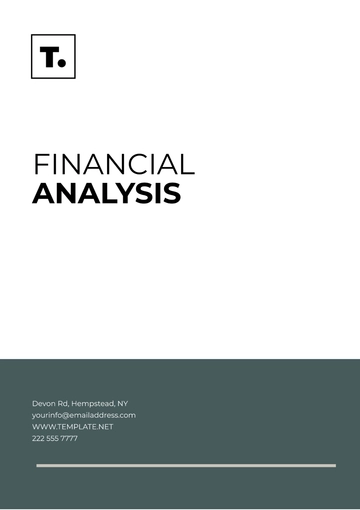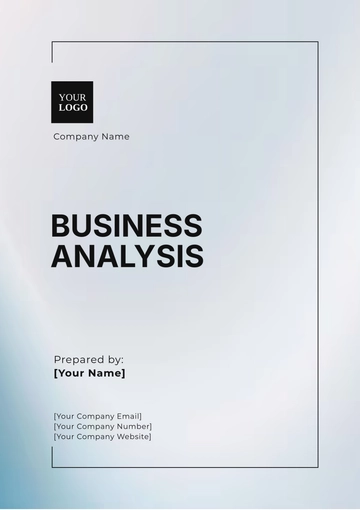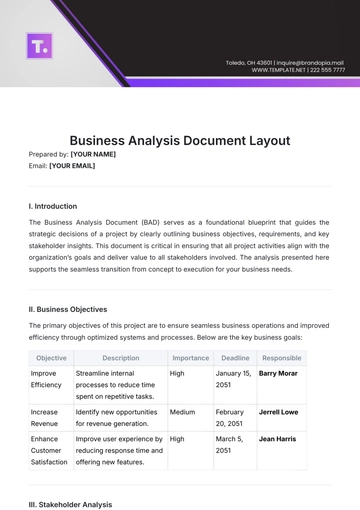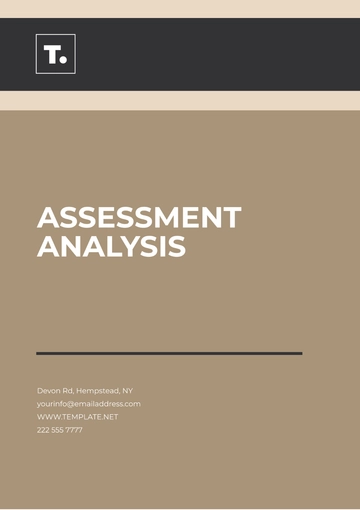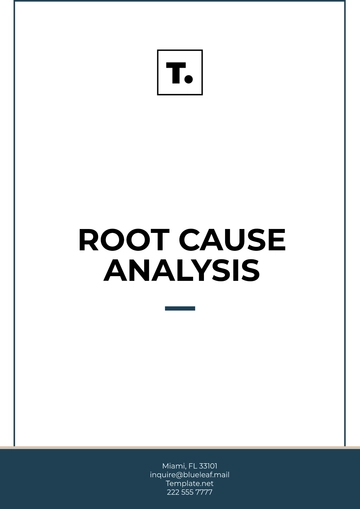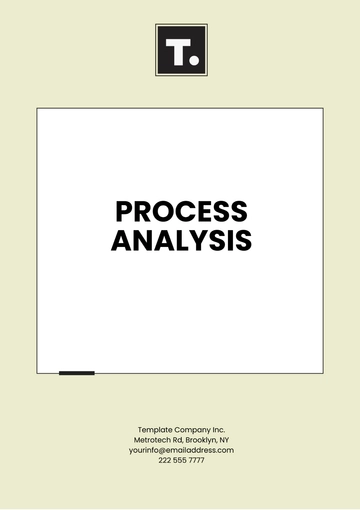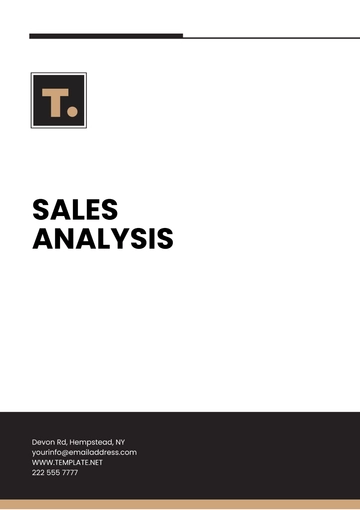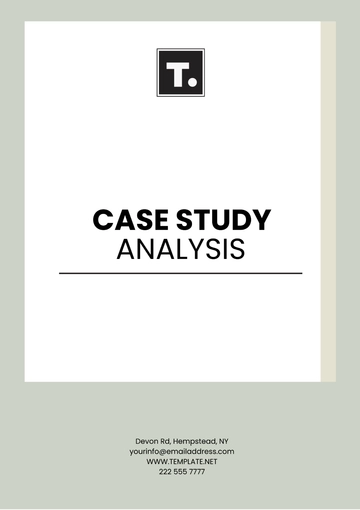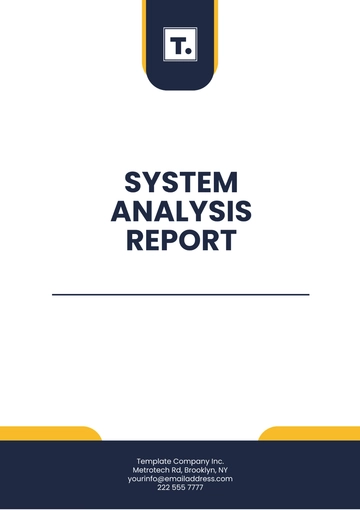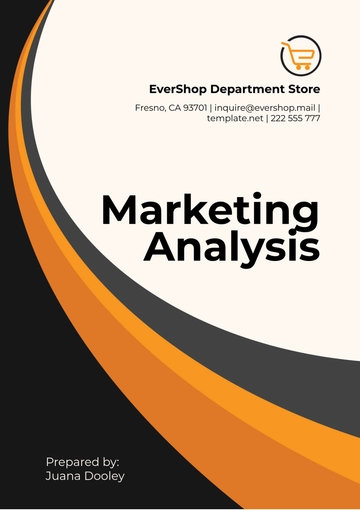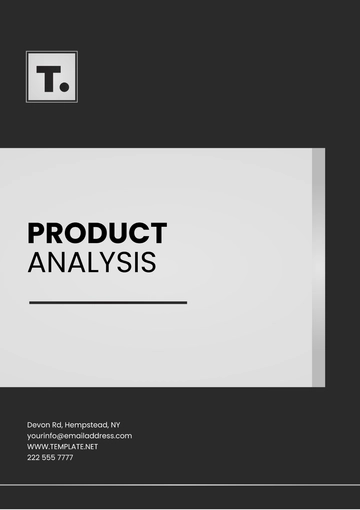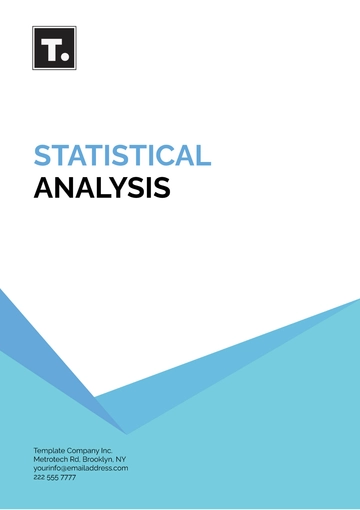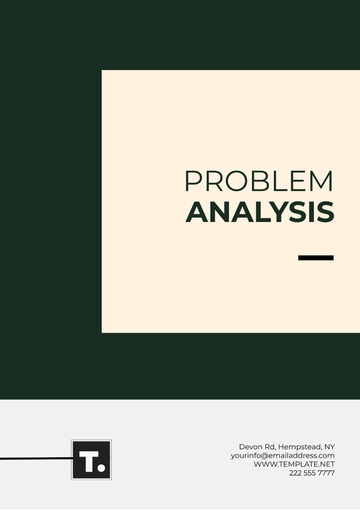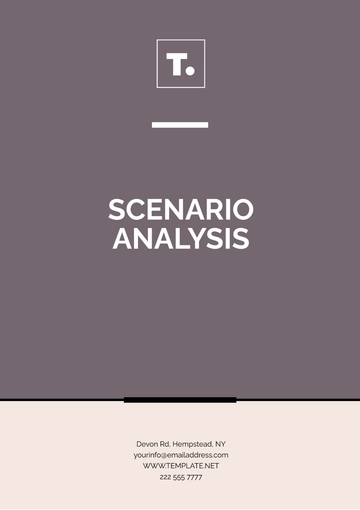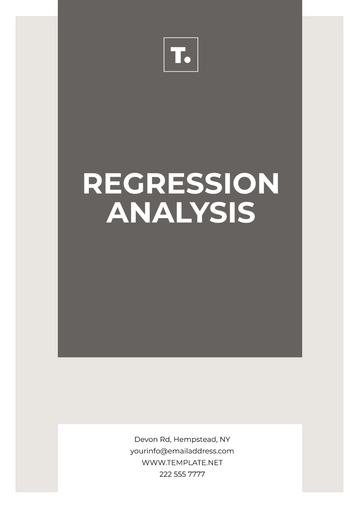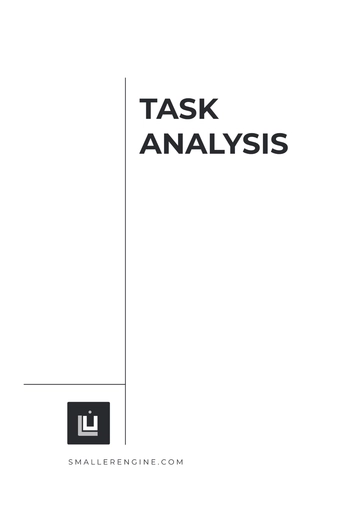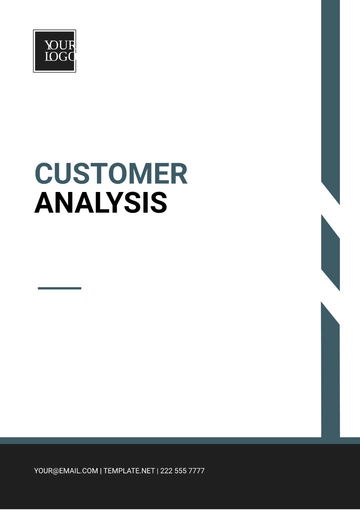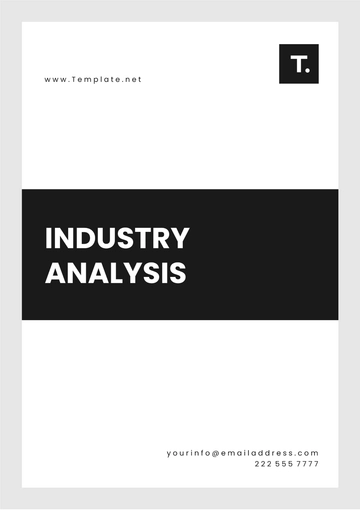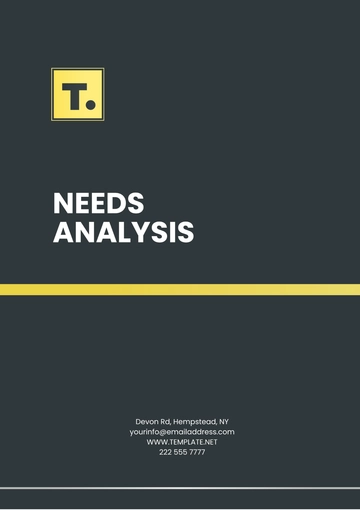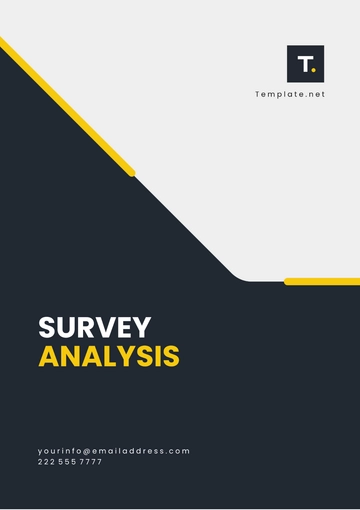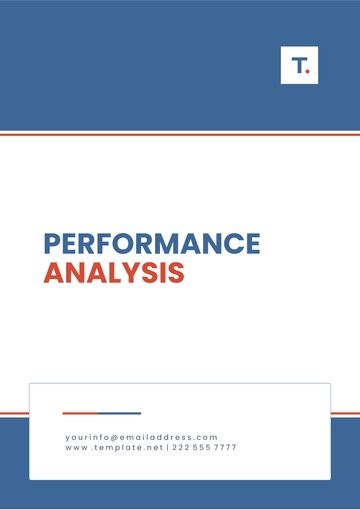Free In-Depth Advertising Financial Analysis
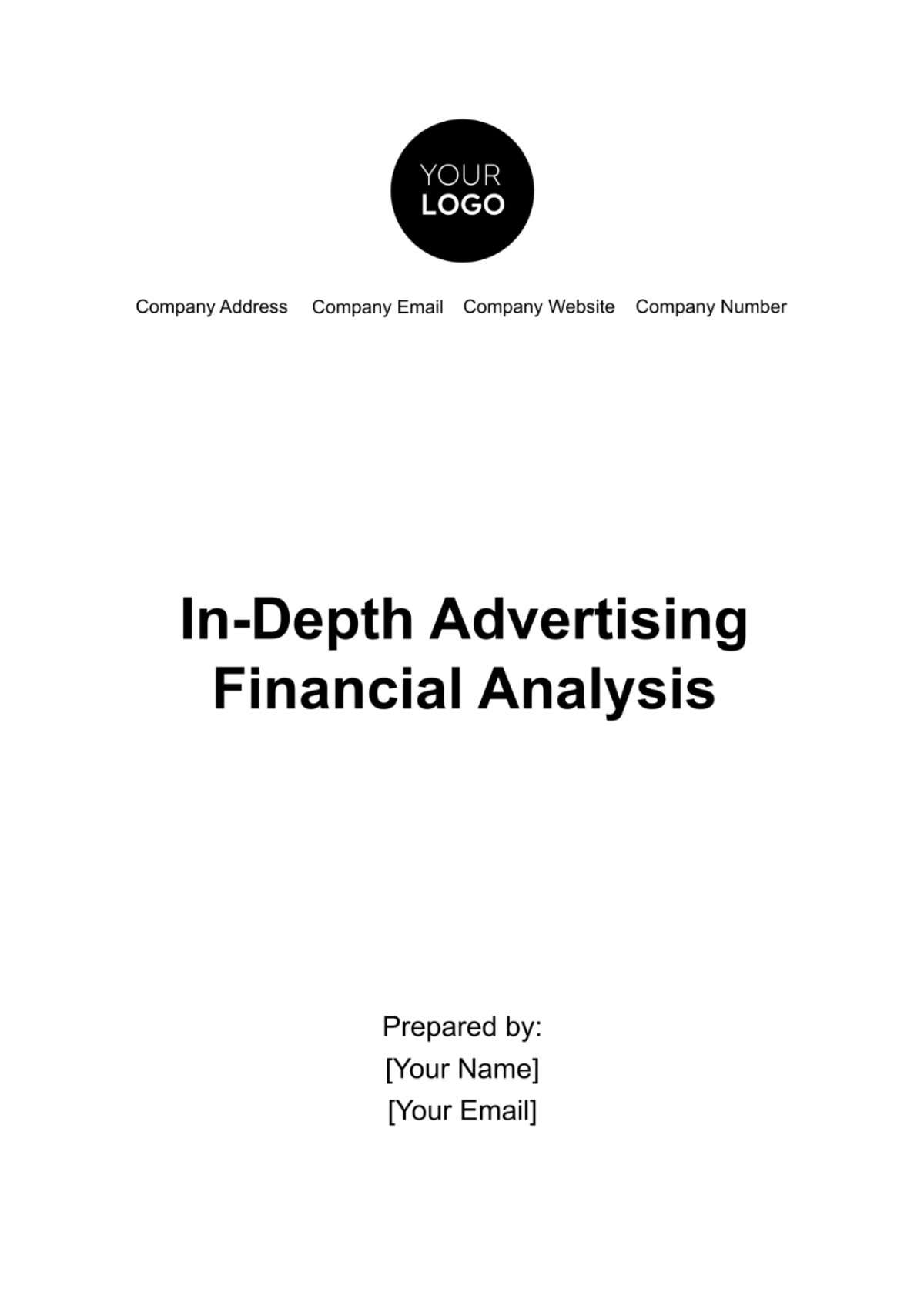
I. Executive Summary
As [Your Company Name] reflects on our advertising journey over the past year, this executive summary provides a concise overview of our financial expenditure and the returns on those investments. It also highlights key trends and strategic insights that have emerged from our advertising efforts. This section aims to present a clear picture of our advertising success, backed by statistical data and analysis, and outlines strategic recommendations for the future.
A. Concise Overview of Overall Advertising Financials
This year, our total advertising expenditure amounted to $2.5 million, marking a 10% increase from the previous year. This strategic increase in spending was driven by our focus on expanding digital and emerging platform initiatives. The direct revenue generated from these advertising efforts was impressive, totaling $7 million. This indicates a strong return on investment, reflecting the effectiveness and efficiency of our advertising strategies.
B. Highlighting Key Findings, Trends, and Strategic Insights
One of the standout trends of the year was the continued dominance of digital advertising, which outperformed other channels in terms of ROI. Our investment in programmatic advertising led to more targeted and efficient spending, contributing significantly to this success. We observed a 30% increase in engagement through programmatic ads compared to traditional methods. Based on these findings, strategic recommendations for the upcoming year include reallocating a portion of the budget from traditional print media to digital platforms and exploring emerging advertising technologies. This shift aligns with the evolving digital landscape and consumer behavior trends.
II. Advertising Expenditure Breakdown
Understanding the allocation and utilization of our advertising budget is key to evaluating the effectiveness of [Your Company Name]'s marketing strategies. This section offers a comprehensive breakdown of our total advertising expenditure by channel, compares the budgeted amounts with the actual spending, and provides a detailed account of specific expenses. The objective is to analyze our spending patterns, assess the return on investment in different channels, and identify opportunities for cost optimization.
A. Analysis of Total Spend by Channel
For the year, our total advertising expenditure was strategically allocated across various channels. Digital advertising, which includes social media, search engine marketing, and programmatic ads, received the largest portion of the budget at $1.5 million, accounting for 60% of our total spend. This allocation reflects the growing importance of digital channels in reaching and engaging with our target audience. Television advertising received $600,000, making up 24% of our budget, while print and other media accounted for the remaining 16%, amounting to $400,000.
B. Budgeted vs. Actual Spend
The dynamic nature of the digital advertising landscape led us to overspend in this area by 15%, largely due to increased investments in programmatic ad buys, which provided a more targeted and efficient reach. On the other hand, our print media budget saw an underutilization of 10%, reflecting the shifting trends in media consumption and the effectiveness of our digital-first strategy.
C. Breakdown of Specific Expenses
In terms of specific expenses, creative and production costs, which include the development of advertising content and materials, amounted to $300,000. These costs are essential for ensuring high-quality and impactful advertising messages. Media buying expenses, which involve the purchase of advertising space and time across various platforms, stood at $1.8 million, highlighting our focus on maximizing reach and visibility.
III. Channel Performance Analysis
Evaluating the performance of various advertising channels is vital for [Your Company Name] to determine the effectiveness of our marketing investments. This section delves into a detailed analysis of the financial performance per channel and how these performances measure up against industry benchmarks. By doing so, we aim to identify our competitive advantages and areas where our strategies can be further optimized.
A. Financial Performance per Channel
Digital channels have emerged as the standout performers in our advertising strategy, yielding an impressive return on investment (ROI) of 4:1. This high ROI reflects the effectiveness of our digital advertising tactics, including targeted campaigns, programmatic buying, and optimized content marketing. Television advertising, while showing moderate success, has been particularly effective in enhancing brand awareness. It played a crucial role in maintaining a broad market presence and reinforcing brand messages.
B. Comparative Industry Benchmarking
When compared to industry averages, our digital advertising ROI stands out as being 20% higher. This achievement is a testament to our innovative approach and effective utilization of digital platforms. On the other hand, our performance in television and print media is in line with industry benchmarks. This alignment indicates that while these channels are performing to standard expectations, there might be room for strategic adjustments to further enhance their effectiveness.
IV. Revenue Impact and ROI Measurement
Measuring the direct impact of advertising on revenue generation is a key aspect of [Your Company Name]'s marketing analysis. This section focuses on quantifying the revenue attributed to advertising across various channels and conducting an in-depth ROI analysis. These metrics are crucial for evaluating the effectiveness of our advertising investments and guiding our future marketing strategies.
A. Revenue Attributed to Advertising
Our digital advertising efforts have been highly successful, contributing an estimated $5 million in sales. This figure highlights the effectiveness of our digital campaigns in driving online transactions and engagements. Television and print advertising, while having a more traditional approach, have also contributed significantly to our revenue, accounting for $2 million in sales. These sales were primarily driven through in-store promotions and brand awareness campaigns.
B. ROI Analysis
A thorough analysis of our advertising efforts reveals that targeted social media campaigns have delivered the highest ROI. These campaigns, characterized by their precise targeting and personalized content, have been particularly effective in converting engagements into sales. On the other hand, television advertising, while maintaining a steady ROI, has been lower in comparison to digital channels. This difference in ROI underscores the evolving advertising landscape and the growing importance of digital media in reaching and engaging our target audience.
V. Market and Competitive Analysis
In the ever-evolving landscape of advertising, staying abreast of market trends and understanding the competitive environment are essential for [Your Company Name] to maintain its edge. This section delves into the latest market trends that are influencing advertising strategies and examines [Your Company Name]'s competitive spending and positioning in comparison to its main competitors. Such analysis is vital for strategic planning and ensuring that our advertising efforts are both effective and relevant.
A. Market Trends Impacting Advertising
One significant trend is the increasing consumer preference for online and mobile-based content. This shift has led to a higher engagement rate with digital ads, especially those optimized for mobile platforms. Another critical trend is the rise in ad-blocking technologies, which presents a challenge for traditional digital advertising methods. This development necessitates more innovative and unobtrusive approaches to digital advertising, such as native advertising and content marketing.
B. Competitive Spending and Positioning
Our analysis reveals that Competitor X has aggressively increased its digital advertising spend by 30%, successfully capturing a larger share of the market. This move signifies the growing importance and high return potential of digital advertising. In contrast, [Your Company Name]'s market position has strengthened in the digital domain but weakened in print media. This shift reflects broader industry trends and consumer behaviors, highlighting the need for a strategic realignment of our advertising mediums, with a greater focus on digital channels.
VI. Efficiency and Optimization Strategies
For [Your Company Name], maximizing the efficiency of our advertising spend is essential for achieving our marketing goals while maintaining budgetary discipline. This section provides an analysis of critical efficiency metrics from our recent campaigns and offers strategic recommendations for optimizing our future advertising expenditures. The goal is to ensure that our advertising budget is not only spent wisely but also aligned with the most effective and engaging platforms.
A. Analysis of Efficiency Metrics
Our analysis shows that the Cost Per Acquisition (CPA) for our digital campaigns averaged $50, a competitive rate that indicates efficient targeting and conversion strategies. Additionally, the Cost Per Click (CPC) across our campaigns was $0.20, reflecting a 5% improvement from the previous year. This improvement in CPC is indicative of more effective ad targeting and a better understanding of our audience's preferences.
B. Optimization of Advertising Spend
Based on these metrics and the observed engagement rates, we recommend a 20% increase in the budget allocated to video advertising for the upcoming year. Video content has consistently shown high engagement rates, indicating its effectiveness in capturing and retaining the attention of our target audience. Conversely, we suggest reducing our spending on print media and reallocating these funds to emerging digital platforms, such as interactive ads and augmented reality experiences. These platforms offer innovative ways to engage with consumers and have shown promising potential in early testing.
VII. Future Projections and Strategic Recommendations
As the advertising landscape continues to evolve rapidly, [Your Company Name] must not only adapt to current trends but also anticipate future changes. This section offers projections on upcoming advertising trends and lays out strategic recommendations for our future advertising efforts. These projections and strategies are essential for ensuring that [Your Company Name] remains at the forefront of advertising innovation and effectiveness.
A. Forecasting Future Advertising Trends
We anticipate a significant industry-wide shift in advertising spending over the next year, with a projected 25% increase in digital advertising expenditure. This trend reflects the growing importance of digital channels in consumer engagement and sales conversions. Additionally, emerging trends such as the increased use of augmented reality (AR) in advertising are expected to gain traction. AR offers immersive and interactive experiences, providing innovative ways to engage consumers and enhance brand perception.
B. Strategic Planning for Future Advertising
In alignment with these trends, we propose a budget of $3 million for next year's advertising efforts, with a substantial 70% allocation towards digital channels. This increased investment in digital reflects its proven effectiveness and the anticipated industry trends. Moreover, we recommend exploring partnerships with technology firms to leverage their expertise in developing innovative advertising solutions, particularly in the realm of augmented reality. Such collaborations could provide us with a competitive advantage by enhancing the creativity and technological sophistication of our advertising campaigns.
- 100% Customizable, free editor
- Access 1 Million+ Templates, photo’s & graphics
- Download or share as a template
- Click and replace photos, graphics, text, backgrounds
- Resize, crop, AI write & more
- Access advanced editor
Unlock the power of data-driven marketing decisions with Template.net's In-Depth Advertising Financial Analysis Template. Crafted by experts, this editable and customizable template offers a comprehensive framework for assessing advertising ROI. Seamlessly integrate your data using our AI Editor Tool to gain valuable insights, optimize budgets, and maximize your advertising impact. Elevate your strategy today with Template.net.


